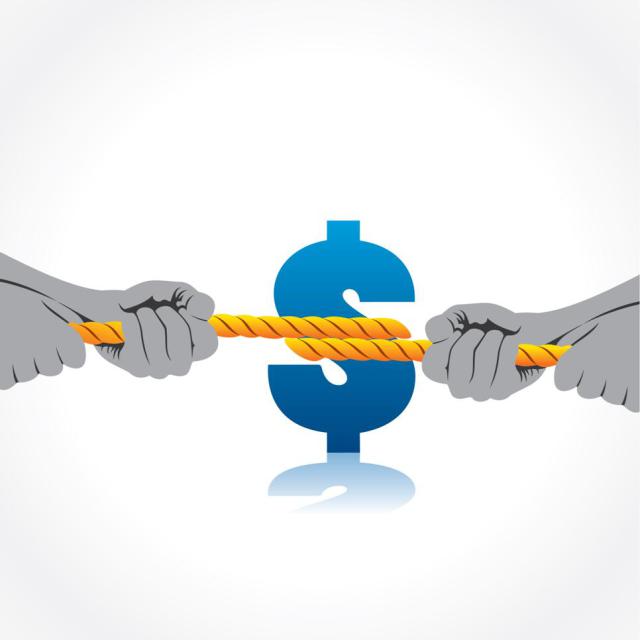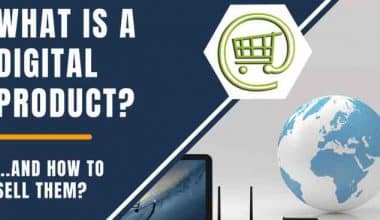Marketing experts engage with prospective clients about their products and services via several means. Such activities are executed through marketing channels. This encompasses an assortment of distribution and communication tactics. If you are interested in marketing, it may be beneficial for you to have a better grasp of various marketing channels. In this post, we present a definition of marketing channels and a list of 10 channels that you may employ in your marketing plan.
What Is a Marketing Channel?
Marketers use marketing channels to establish a relationship between a manufacturer or firm and a group of prospective clients. A multitude of outlets assist professionals in managing sales and developing an efficient marketing plan for their businesses. Each channel may have a unique function, such as establishing a brand identity or disseminating information about a new product. Each sort of marketing channel is often one of the following:
#1. Communication
These marketing channels of distribution convey a specific message to a specific audience. For instance, the content of a promotional email is a component of a communication marketing channel because it conveys a certain message to the receivers.
#2. Distribution
These distribution channels indicate the means by which the product reaches the customer. Distribution marketing includes, for instance, the packaging a company employs to transport its items to clients.
#3. Service
These channels of marketing include concluding business deals. For instance, the means via which a business gets money for its items are service marketing channels.
Why are Marketing Channels Important?
As a company prepares to launch a product or service, it must design and define its marketing mix. Effective marketing mixes product, pricing, place, and promotion.
Product is the first marketing mix element. A business must design a product that customers want to buy because it meets their demands and offers desirable qualities. It should deliver a better customer experience and separate itself from competitors with value-added features.
Second, price. The company must price its goods based on their value. Pricing should be competitive with similar products in the market and account for differentiating aspects and value. Place and promotion require knowledge of marketing channels in distribution.
To satisfy the third marketing mix factor, place, a company must understand where buyers want their products and make them available there. Also, many IT companies sell online (direct-selling) or through retailers (selling through intermediaries).
Promotion identifies the optimal channels for distributing product messaging to a target demographic. Direct sellers need promotions because they don’t have merchants or wholesalers to generate sales. Online sellers must select the digital marketing channels with the best ROI.
As viewers tune out or reject frequent ads, the overall ROI for any marketing channel may decline. Companies should try new marketing channels and use marketing automation to prevent sending repetitive messages to the same prospects.
What Are Marketing Channel Strategies?
Depending on the goals of the business, a unique marketing strategy may target a certain marketing approach or channel.
A common example of a marketing strategy that makes use of digital mediums is the “digital marketing strategy,” which may include a company’s website, email, and social media accounts.
Some businesses, meanwhile, benefit from a more nuanced approach to marketing through channels such as social media, email, and their own websites.
Either method is viable, provided that all marketing efforts serve the overarching goals of the strategy as a whole.
When establishing a marketing channel, you may pick from a number of different approaches. Choose your advertising mediums with care, prioritizing those where your demographic spends the most time.
Marketing Channels of Distribution
With the development of online shopping, marketers have more options than ever before in choosing where to purchase. These are channels of distribution. Marketers have the option of selecting a single distribution channel or multiple channels. For example, here are eight distribution channels that facilitate product access for consumers:
#1. Direct sales
Through their own stores, websites, or merchant platforms, companies can offer items and services directly to consumers. This approach works effectively for enterprises such as bakeries that produce and sell their products in the same place. Digital products, like music files and software, also lend themselves well to direct distribution. An indie musical label, for instance, may permit listeners to purchase and download music straight from its website. Some advantages of direct selling include:
#1. Increased Trust
Customers may feel closer to the business if they are aware that the company desires direct communication with them.
#2. Greater Control Over Customer Experience
Businesses are able to manage all aspects of product distribution and consumer experience through direct sales. Besides clients always interacting directly with the supplier, the direct sales procedure facilitates the efficient resolution of these concerns.
#3. Cost-effectiveness
Businesses save the funds they would have spent on third-party distributors or vendors. Consequently, they might reduce their prices to acquire a competitive advantage.
#2. Retailer
Retailers are one of the most common and efficient distribution routes. Supermarkets, department stores, specialized shops, and big-box retailers are examples of retailers. Today, retailers and marketers can place their products in either physical or online stores or both. Among the advantages of using a store are:
#1. Product Interaction
When consumers shop at brick-and-mortar establishments, they can engage with products prior to purchase. Consumers are more confident in a product when they are able to see and even try it in person.
#2. Increased Product Awareness
Retailers can introduce consumers to products they were previously unaware of.
#3. Diverse Promotion Strategies
To make their items more enticing, marketers can collaborate with merchants on strategic placement, product demos, and promotional materials.
#4. Increased Audience
People are frequently loyal to merchants. Also, companies offering their products through stores can capitalize on the existing consumer loyalty to these establishments.
#3. Independent Distributor
Independent distributors are agents who provide stores with merchandise. More so, distributors serve as a link in the marketing distribution network. Among the advantages of using an independent distributor are:
#1. Established Networks
Distributors have created networks of retailers to whom they can market their products. Moreover, these connections are utilized by distributors to place products in front of the most responsive consumers.
#2. Easier Storage
Distributors keep products in their warehouses, sparing companies the cost of maintaining their storage facilities.
#3. Motivation to Work for the Business
As distributors purchase and keep things in their own warehouses, they are typically incentivized to resell them.
#4. Reseller
Resellers are extremely similar to distributors, but unlike distributors, they supply customers directly as opposed to retailers. Instead of purchasing and keeping goods, as do distributors, resellers typically operate online businesses. On every sale, commissions are deducted from the price. They then arrange for things to be shipped straight to the customer from the manufacturer or supplier. Several advantages of utilizing resellers include:
#1. Cost-effectiveness
As they perform less work promoting products, resellers are more economical than wholesalers.
#2. Increased Visibility
The visibility of a company’s products may increase after forming a partnership with a notable reseller. For instance, an independent musician may use a reputable reseller to release a new record and reach a larger audience.
#3. Value-added Services
Some retailers provide shoppers with additional incentives that can make things more enticing. Additionally, a software reseller who offers customer support and training programs is an example of value-added distribution.
#5. Wholesaler
Wholesalers purchase and sell in bulk. As a link in the marketing distribution chain, wholesalers can offer their products to retail stores. Nonetheless, some wholesalers also sell to the general public through vast open warehouses and online sites. You may want to investigate wholesale distribution if your products are suitable for bulk sales, as many food items are. Hence, the advantages of employing wholesalers are:
#1. Low Costs That Entice Buyers
Because they work with such big volumes, they are frequently able to sell things at far lower prices than shops.
#2. Efficiency
Since wholesalers purchase and sell in bulk, they can help businesses efficiently transport their products.
#3. Industry Knowledge and Connections
Businesses can exploit their extensive knowledge of the supply chain and industry contacts.
#6. Intensive Distribution
In intensive distribution, products are sold through a wide number of channels. This distribution strategy is frequently used for inexpensive, well-known products, such as soft drinks. People are aware that these products are available in the majority of supermarkets, convenience stores, restaurants, and vending machines. Several advantages of dense distribution include:
#1. Increased Reach
Unlike selling through a single retail chain, selling at multiple places allows firms to reach a considerably larger audience.
#2. Increased Trust
Consumers become accustomed to something they see frequently. Since intense distribution consistently places things in front of consumers, it can be an effective means of establishing credibility.
#3. Substitution Benefit
Companies are often able to market their products to people shopping for similar things that are less accessible because their products are readily available.
#7. Exclusive Distribution
An exclusive distribution agreement restricts the availability of goods and services to third-party marketing channels. Exclusive distribution is a typical option for premium items, although extensive distribution is advantageous for inexpensive products. Several advantages of exclusive distribution include:
#1. Exclusivity
Exclusive distribution agreements can elevate the prestige of a product, hence increasing demand. Some premium accessories, for instance, are exclusive to a particular distributor in each international market.
#2. Greater Control
With a single distribution channel, companies have greater control over product distribution. Consequently, they may establish stringent standards for the third-party distributor to ensure that their customers enjoy the greatest possible experience.
#3. Better Terms
Distributors desire exclusivity, therefore they are more inclined to negotiate favorable terms with companies providing exclusive contracts.
#8. Selective Distribution
Selective distribution is a compromise between extensive and exclusive distribution. Companies that embrace selective distribution carefully select multiple marketing distribution channels. For instance, a luxury accessories firm that employs selective distribution may entrust its products to upscale department stores while avoiding big-box retailers. Several advantages of exclusive distribution include:
#1. Some Degree of Control
Dealing with a restricted number of distribution channels enables businesses to exert greater control over numerous aspects of the sales process, including product displays and sales pitches. These controls ensure that clients enjoy a uniform shopping experience regardless of where they purchase.
#2. An Element of Prestige
When a product is not widely available, consumers perceive it as more exclusive and distinguished.
#3. Increased Reach
Selective distribution exposes more consumers to goods than exclusive distribution.
What Are The 4 Types Of Marketing Channels?
Paid channels, free channels, digital channels, and traditional channels make up the four primary categories of marketing channels. These primary marketing channels encompass a variety of others, including sponsored advertisements, social media influencers, and social media platforms themselves.
What are the 4 Communication Media Channels?
There are numerous modes of communication available to us, including but not limited to written communication, spoken communication, non-verbal communication, and visual communication.
It is essential that the information be successfully transmitted no matter what mode of communication we decide to use.
Multiple Marketing Channels
Multichannel marketing is an integrated marketing strategy that employs several communication channels to engage prospects and consumers. Historically, marketers were only able to measure reaction across a single channel at a time. Channels did not communicate with one another, depriving the consumer experience of valuable context: For instance, you may observe that a subscriber to your newsletter opened your most recent email, but you are unaware that they have recently downloaded your mobile application.
In a multi-channel marketing ecosystem, each customer touchpoint contributes to the overall customer experience, and your marketing messages are continually aligned with your customers’ communication preferences, regardless of the channel they use. You can collect all of your accessible customer data across each marketing channel and utilize a customer’s activity in one channel to trigger the next action in your campaign, thus, may target a different channel.
The result is a marketing strategy that is totally aligned and highly tailored for each unique user. Customers’ behavioral data can be utilized to determine the channel of their preference (one user may respond better to SMS, while another may respond better to email), how recently the consumer has received a message via any particular channel, and how the customer replied to the message.
With a multi-channel marketing approach, you may gain a comprehensive understanding of each phase of the purchase cycle by eliminating assumptions and gaining insights from each consumer interaction. As a result, you can customize your messaging and communications tactics to reach each customer when and how they are ready to interact with you (on the specific channels they prefer to use).
What is the Best Marketing Channel?
Utilizing just one marketing channel is extremely unusual and most certainly not the most effective strategy. It is typical practice for brands to make an effort to be present in as many channels as is humanly possible, in the belief that doing so will expand both their reach and the convenience they offer to customers.
Having said that, it is standard practice to concentrate on a single channel or a limited number of channels. For instance, here at Ahrefs, we place a strong emphasis on organic search as well as video marketing because both of these channels are able to service various stages of the marketing funnel. This has proven to be an efficient method for communicating with our target demographic.
How to Choose Marketing Channels?
Carry out some studies on the market to discover the locations where your target audience congregates as well as the communication methods utilized by your competitors. The next step is to begin utilizing those channels to conduct experiments to determine what works for you and what does not, and then to iterate based on the results of those experiments.
How are Marketing Channels Different in B2B Than in B2C?
Both B2B and B2C firms put money into the same marketing channels (according to HubSpot). Nevertheless, the manner in which they utilize the channels might be different.
These channels are typically utilized by B2C brands in order to provide entertainment and directly influence sales. B2B companies place a greater emphasis on training potential customers and developing relationships that will stay.
These kinds of brands may also discover that certain kinds of content or platforms are more suited to them than others. For instance, B2C brands almost never post case studies, whereas B2B firms find LinkedIn to be a more effective marketing platform.
Types of Marketing Channels Distribution
Professionals can effectively appeal to their target audience using varieties of marketing distribution channels. Amongst these channels are:
#1. Direct Selling
Direct selling is among the channels of marketing distribution, that professionals use to communicate directly with prospective customers. Therefore, these contacts occur individually and may be most effective for smaller organizations. Direct selling typically involves marketing to known individuals. This marketing channel may be less expensive for the firm because advertising space, distribution charges, and other marketing materials are not required. A successful product sale may result in a greater overall profit if these expenditures are lowered. This is a marketing communication channel.
#2. Catalog Direct
Catalog direct is a form of direct marketing in which a potential customer peruses a physical or digital catalog. A catalog may feature prices, product information, and photos. The viewer then chooses the desired products from the catalog and submits an order. This channel can eliminate the necessity for face-to-face interaction with a potential customer. It also provides the buyer with a variety of possibilities from which to choose. If you sell a variety of products and want to provide the buyer options, catalog direct may be a possibility. This is a marketing communication channel.
#3. Network Marketing
Comparable to direct selling, network marketing is a sales channel in which sellers utilize their personal networks to generate revenue. For instance, people may promote a product on their personal social media accounts to inform their friends and relatives about the product. This type of marketing channel focuses on telling people about the product and selling it directly to them using information, photographs, or your personal testimonial to the product’s usefulness. Network marketing is another example of a marketing communication channel.
#4. Value-added Resale
This marketing channel may acquire a product and add value to it prior to reselling it to its intended market. For instance, a company that offers bespoke bookshelves may purchase prefabricated bookshelves from a wholesaler before modifying each unit to match the demands of the customer. By adding value to the original product, the corporation may sell its products as distinctive, precious, and desirable. This marketing channel is distributive since it pertains to how customers perceive the product.
#5. Digital Advertisements
This communication marketing channel contains a number of digital platforms that can be utilized to promote your products and services. Furthermore, your company may sell things via a website, targeting a certain audience with its marketing efforts. Other digital advertising methods include ad space on social media platforms or other websites, as well as the use of your own social media platforms to promote to a specific audience. Depending on the strategy you employ, digital marketing may incur expenses for your firm. This marketing channel is widespread and extremely efficient.
#6. Events
This also serves as one of the marketing channels of distribution since it affords marketers the opportunity to communicate with potential customers in a unique setting. You may hold an event with a specific objective, such as promoting a new product line. It is essential that these events provide clients with the opportunity to ask questions about the product, comprehend its worth, and possibly make a purchase. The events themselves require marketing so that attendees are aware of the place, time, and other details. Since clients can purchase a product at a marketing event, it serves as both a communication and a distribution marketing channel.
#7. SEO Marketing
SEO, or search engine optimization, refers to the results that appear when a potential customer searches for anything online. As a marketing channel, it is crucial to optimize the search engine results page, as doing so might result in increased visitors to your company’s website. There is a range of SEO marketing methods, the implementation of which depends on your target market, product, and sales objectives.
#8. Email Marketing
Email marketing is another form of communication marketing medium. This channel refers to promotional emails with a specific message sent to a targeted audience. Also, a marketing email may contain details about an impending sale, a new product introduction, or modifications to a well-known product. Equally important, email marketing enables businesses to give particular information in a variety of email messages, which presents marketing experts with unique options.
#9. Indirect Marketing
Multiple channels are utilized by indirect marketing to convey a product to a consumer. In contrast to direct marketing, in which a producer sells directly to a customer, indirect marketing involves the participation of many parties. A manufacturer, for instance, may sell to a retailer. The retailer then shows the product in their store, where a buyer decides to purchase it.
#10. Video Marketing
Now is the moment to investigate video marketing if you haven’t before. Video may increase conversions, raise ROI, and aid with audience relationship building. Also, video is the most effective medium for marketing efforts. Additionally, 69 percent of consumers prefer to learn about a brand’s offerings via video.
For both B2B and B2C marketers, short-form video content is king, and they expect to boost spending in the approach for 2023. (29 percent of marketers even plan to leverage it for the first time). In fact, Facebook, YouTube, and Instagram are the most popular platforms for video sharing, with Instagram being one of the most effective video marketing platforms.
FAQs
Why are marketing channels used?
Using marketing channels enables manufacturers of goods and services to develop an effective strategy for delivering the appropriate products to their target customers.
What are the 7 P's in marketing?
It consists of goods, pricing, promotion, location, people, process, and physical proof.
What are marketing channel intermediaries?
Channel intermediaries are external organizations, individuals, and businesses that aid in the delivery of a company’s products to clients.
Related Articles
- OPEN LISTING: A Complete Overview, Types, And Examples
- OMNICHANNEL MARKETING: Definition, Tips, & Examples
- NETWORK MARKETING: Definition & How Does It Works
- DIGITAL MARKETING CHANNELS: Most Effective Digital Marketing Channels for Your Business
- CHANNEL MANAGEMENT: Meaning, Examples & Why It Is Important






